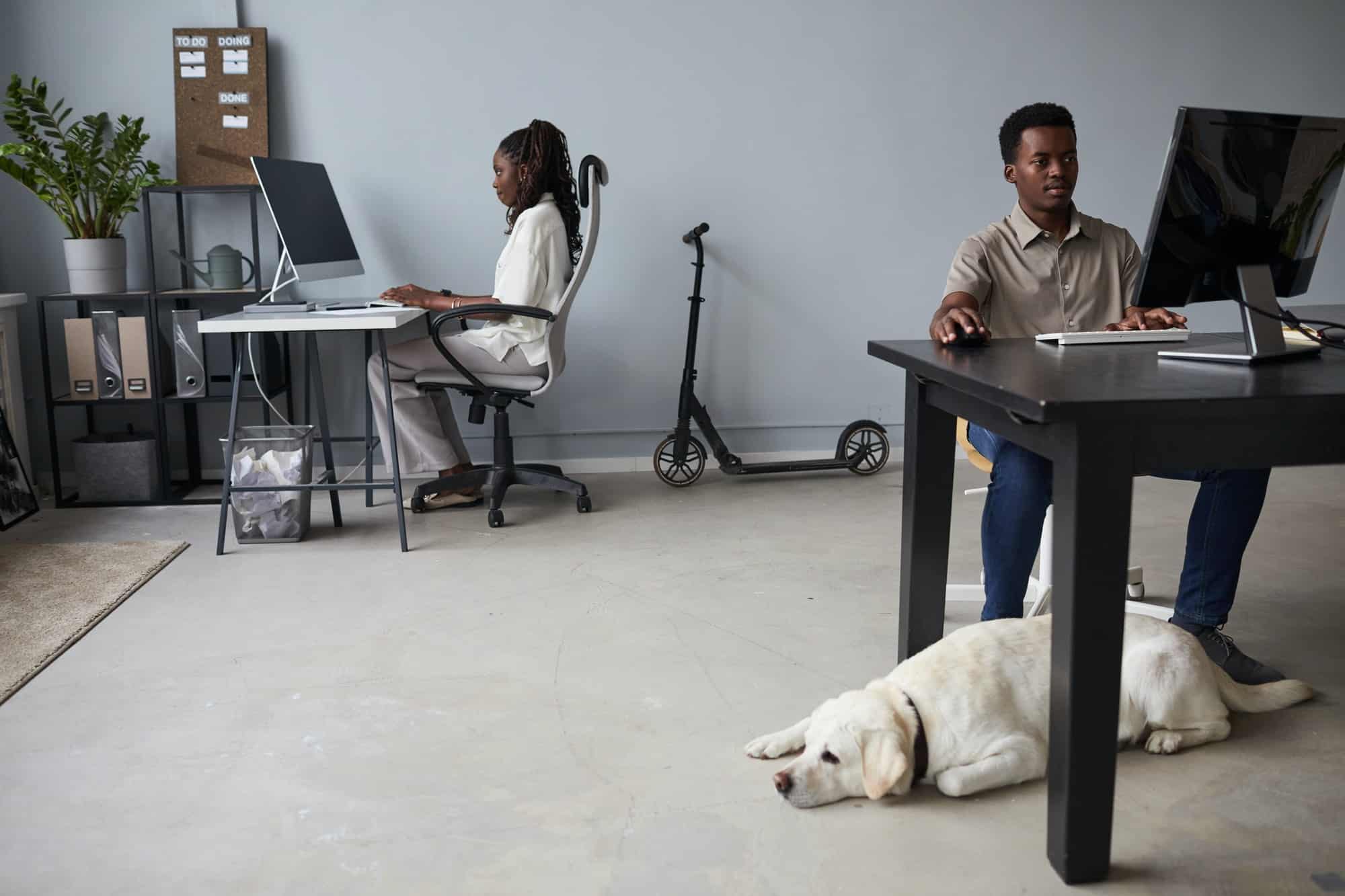How to Create a Pet-Friendly Workplace in the UK: A Step-by-Step Guide?

In the ever-evolving work landscape, companies are always in search of innovative ways to boost employee morale and productivity. One trend making waves across the globe is the pet-friendly workplace. It is no longer a surprise to walk into an office and find a dog napping in a cosy corner or a cat purring on someone’s desk. Indeed, pets in the workplace have proven to be beneficial to the work environment in more ways than one, reducing stress and fostering a sense of community among employees. If you’re considering this possibility, let’s delve into how you can create a pet-friendly workplace in the UK.
Embrace the Idea
Deciding to make your workplace pet-friendly is more than just allowing pets into the office. It is a commitment to creating an environment that is conducive for both your employees and their pets.
Lire également : Catch the final show: jeff lynne's elo live at hyde park
Such a transition involves a significant shift in the company’s policy, affecting every aspect of the workplace, from the physical environment to the daily operations. Hence, the first step is to get everyone on board with this idea. Discuss it with your team and gauge their reactions. Remember, it’s crucial that everyone feels comfortable in their work environment.
Solicit feedback from all employees, not just pet owners. There could be people with allergies, phobias, or simply those who prefer a pet-free environment. Therefore, an open discussion will help ensure that all concerns are addressed, paving the way for a smoother transition.
Lire également : Discover savings on asiana a380 business class
Create a Pet Policy
Once everyone is on board, the next step is to establish a clear and comprehensive pet policy. This policy should spell out the rules and regulations about bringing pets to work, including the type of pets allowed, behaviour standards, cleaning responsibilities, and the steps to handle any pet-related issues.
The policy should also address health and safety concerns. For instance, it should stipulate that all pets coming to the workplace must be up-to-date with their vaccinations and in good health. A pet owner must also provide proof that their pet is well-behaved and won’t pose a threat to others.
Consider the Space
The office environment plays a critical role in whether a pet-friendly policy will work or not. Not all workplaces are suitable for pets. Therefore, it’s essential to evaluate your office space and make any necessary modifications.
Start by considering the layout of your office. Open-plan offices might be more conducive to a pet-friendly environment as they offer more space for pets to move around. If your office is more confined, you may need to designate specific areas for pets.
Additionally, you will need to pet-proof your office. This could involve securing loose wires, removing toxic plants, and ensuring there are no small items that a pet could swallow. It will also be beneficial to provide pet-friendly amenities, such as pet beds, feeding stations, and a designated outdoor area for pets to relieve themselves.
Encourage Responsible Ownership
While the company can set policies, the success of a pet-friendly workplace largely depends on the pet owners. Encourage responsible pet ownership among your employees. Their pets should be well-trained and able to behave appropriately in a social environment.
Pets can provide a welcome distraction from the day’s work, but they shouldn’t disrupt others’ productivity. Thus, owners should be ready to manage their pets during the workday, ensuring they are quiet, clean, and not causing any unnecessary distractions.
Adopting a pet-friendly policy can be a fantastic way to boost morale and foster a more relaxed, friendly working environment. However, it is a significant change that requires careful planning and consideration. By following these steps and taking into account the diverse needs of your employees, you can successfully create a pet-friendly workplace in the UK.
Update Your Insurance Policy
Before you start bringing pets into the workplace, make sure your company’s insurance policy covers any potential pet-related incidents. If not, you’ll need to update your policy.
Insurance can provide protection in case of property damage or if a pet injures an employee or visitor. It’s also worth considering any potential liability in situations where a pet might damage an employee’s personal property.
You’ll want to discuss this with your insurance provider to understand what is and isn’t covered under your current policy. It’s better to be safe than sorry when introducing pets into your workplace.
Remember, creating a pet-friendly workplace should be a well-thought-out decision that benefits everyone involved. By considering all these factors, you can ensure a smooth transition towards becoming a pet-friendly workplace. It might require time and effort, but the benefits can make it all worth it.
Provide Social Support and Training
Implementing a pet-friendly office means not only considering the physical environment but also the social support and training needed. Social support is crucial in successfully integrating pets into your workplace. Employees must be equipped with the knowledge and resources they need to handle pets at work effectively.
Start by providing some basic training for all employees, including those without pets. This could include courses on pet behaviour and safety, or workshops on dealing with potential issues, such as allergies or fears related to pets. Providing first aid training specific to pets is also advisable, ensuring everyone in the office knows what to do in case of an emergency.
For pet owners, additional training may be necessary. Encourage dog owners to enrol their dogs in obedience classes to ensure they can behave appropriately in an office environment. They should also be educated about their responsibilities as pet owners, including maintaining their pets’ health, safety, and hygiene.
Creating a pet-friendly workplace is more than just bringing pets to work. It’s about creating an environment where employees and their pets can thrive together. By providing social support and training, you can ensure that everyone is prepared and comfortable with having pets in the office.
Conclusion: Monitor and Adjust Your Pet-Friendly Policies
Implementing a pet-friendly policy is not a one-and-done deal. It’s an ongoing process that requires continuous monitoring and adjustments. Start by implementing a trial period for the pet-friendly policy. Encourage employees to provide feedback about the impact of pets in the workplace. You will likely need to tweak the policy based on the feedback and experiences during the trial period.
Bear in mind that what works for one workplace might not work for another. As such, it’s critical to tailor your pet-friendly policies to suit your specific work environment and the needs of your employees. Regularly review your policy to make sure it’s working for everyone – employees, pets, and the company at large.
Creating a pet-friendly workplace in the UK can yield significant benefits, from boosting employee morale and productivity to creating a more inclusive and relaxed work environment. However, it’s not without its challenges. With careful planning, consideration, and ongoing adjustments, you can create a pet-friendly workplace that works for everyone.
Remember, the success of a pet-friendly office largely depends on the people within it – from the pet owners to those without pets. By ensuring everyone’s comfort and safety, promoting responsible pet ownership, and providing social support and training, a pet-friendly office can soon become a reality.
